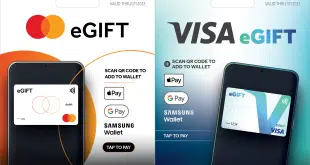Online merchants shouldn't wait for chargebacks to indicate a problem with fraudulent orders. Instead, they should pay attention to other indicators, such as the volume of canceled orders, to anticipate whether a wave of chargebacks is about to hit. That's the argument Dave Moriarty, director of data mining at Apple Inc., made last week at a risk-management conference for Web-based retailers. Moriarty said that of all chargebacks the company receives, his department has already foreseen more than half. “Fifty-one percent of chargebacks that come in we already know about,” he told his audience at the Merchant Risk Council meeting in Las Vegas. “Twenty percent we know about in the first week after the order.” The importance of anticipating chargebacks lies in the fact that the returns often indicate only a small part of what could be a large, underlying fraud problem. “These chargebacks could be the tip of the iceberg,” Moriarty told Digital Transactions News. “That's why I want to know about these groups early. Once we know there's a hole in the system, we can plug it. You can stem the losses.” Managing fraud losses is especially important for an online merchant like Cupertino, Calif.-based Apple, which deals in high-end electronic gear like personal computers and iPods. Apple ranked seventh among U.S. online retailers in 2007, with $2.7 billion in sales, according to Internet Retailer magazine. Its average ticket was $130, the magazine estimates. Web merchants lost $4 billion to payment fraud in 2008, up from $3.7 billion the year before, according to research by CyberSource Corp., a Mountain View, Calif.-based vendor of risk-management and payment-gateway services (Digital Transactions News, Dec. 10, 2008). Because of steadily climbing sales volume, fraud as a fraction of volume remained constant at 1.4%. Only 42% of all fraudulent orders are discovered through chargebacks, the CyberSource study found. Moriarty advised merchants to track the rate at which risk managers are canceling orders because of known fraud. “Canceled fraud is very correlated to chargebacks,” he said. “If you canceled a lot of fraud orders you're probably going to have a lot of chargebacks. When it's high, be worried.” An even better indicator, he told his audience, is the rate of what he called shipped fraud, or the number of orders shipped that risk managers soon determine were fraudulent. Shipped fraud can be determined when fraud agents spot a suspicious pattern that fits known fraud activity or when cardholders call Apple to ask about a charge on their accounts before filing a chargeback request with their issuers, Moriarty told Digital Transactions News. “The ultimate Holy Grail is shipped fraud,” Moriarty told his audience. “We put a lot of effort into knowing shipped fraud before chargebacks come in.” One such suspect pattern occurs with large orders that don't match a customer's typical usage. “Fraudsters are buying more than they can consume,” Moriarty said. “That's an anomaly.” In the end, Moriarty warned, waiting for chargebacks only means merchants lose precious time to tweak their risk-management systems. Once fraudsters discover a weakness in a merchant's system, they will exploit it fast and keep exploiting it, he warned. “What you're bad at, you're going to see more of,” he said. Ultimately, prompt tweaks?adaptations, as Moriarty calls them?are a result of early-warning indicators like canceled-fraud and shipped-fraud rates, he said while cautioning that “chargebacks are a poor metric for adaptations.”
Check Also
Consumers Plan to Use Tax Refunds To Pay Down Debt, ACI Finds
Paying down debt is one of the top ways consumers intend to spend their tax …





